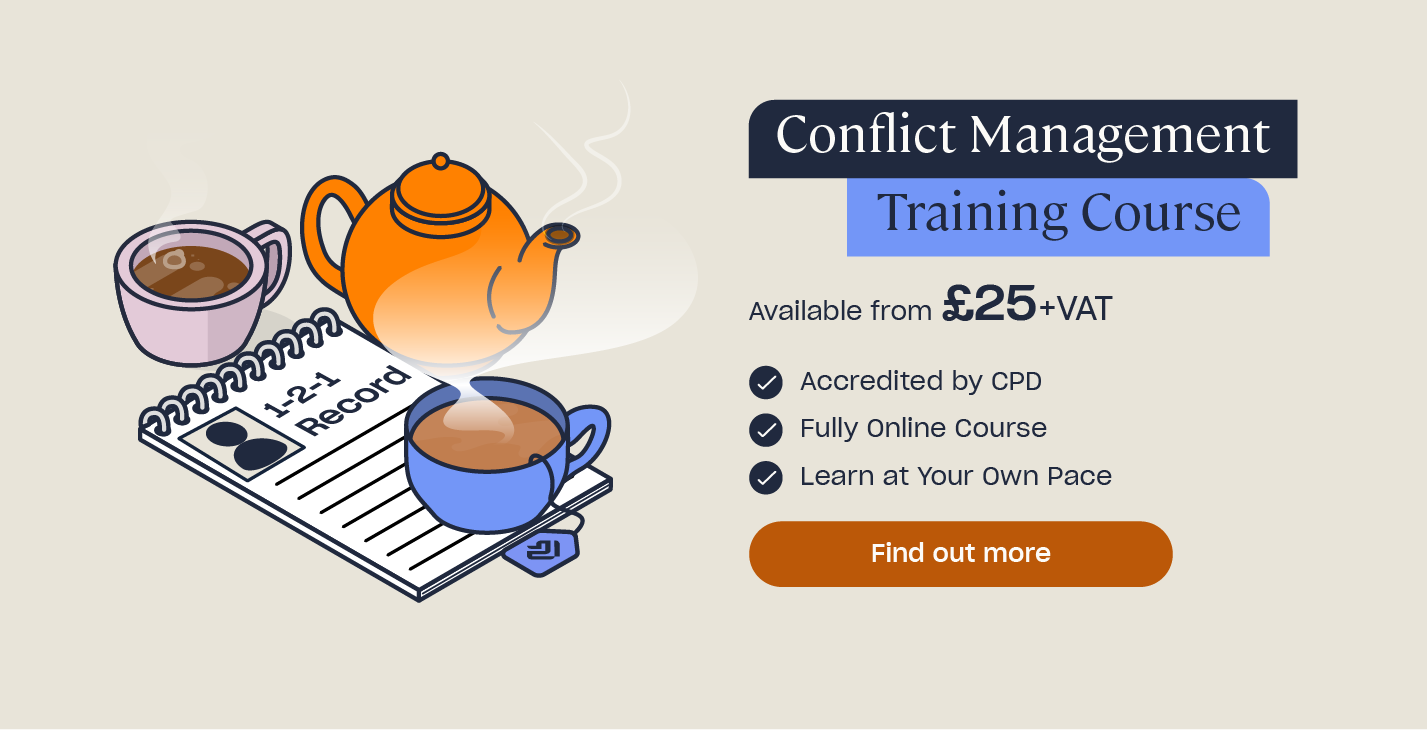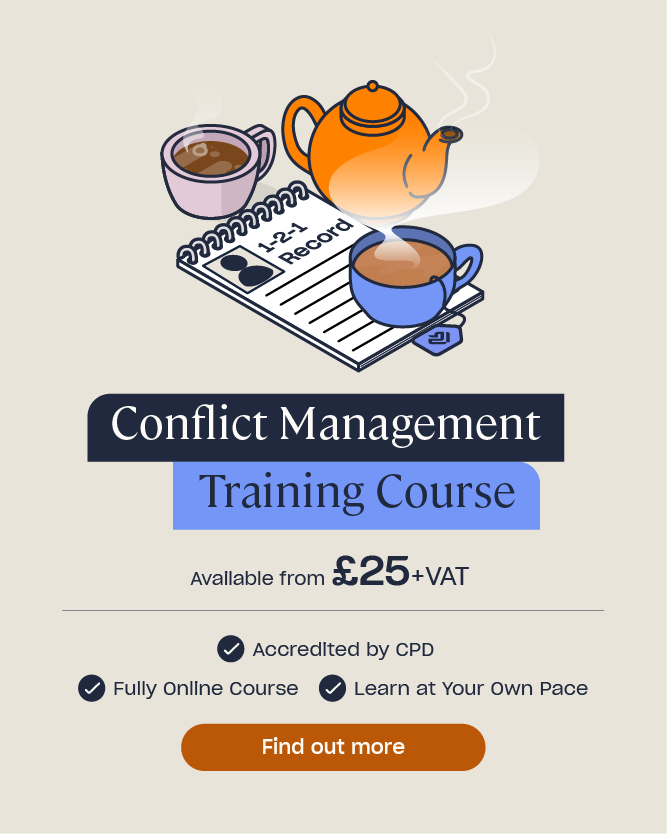Signs of Conflict in the Workplace
When people work together, it’s unlikely that they will always get on. Different personalities, styles of working, values, and beliefs can all lead to conflict between employees.
Conflict will always exist in the workplace. However, if you simply tune into your employees, you can easily recognise tension and signs of conflict, and in turn stop the situation from escalating. Some signs, however, are easier to spot than others. For example, an outward argument is much easier to recognise than an anxious employee who bottles up their feelings.
To help you recognise potential conflict in your workplace, we have produced a comprehensive guide explaining the most common signs of conflict.
Signs of Conflict
It’s not enough to rely solely on people reporting conflict. You must be aware of signs and act quickly to prevent the situation from worsening.
Need a Course?
Our Conflict Management Training Course is designed to train senior members of staff how to prevent and handle conflicts that occur in their workplace whilst our Conflict Resolution Course is designed for employees at all levels.
Have a look at the ten common signs of conflict below:
- Body language – A person’s body language is one of the most common ways to tell whether something is amiss. Often, people do not realise the body language they adopt, so focusing on body language can be essential in recognising if an employee is bottling a problem up. Examples of body language to watch out for include:
- Avoiding eye contact – this can show nervousness towards a person.
- Crossed arms – someone who feels under attack may adopt crossed arms, which shows defensiveness.
- Frowning – this expresses discontent and sometimes anger towards a person and/or situation.
- Position – people may stand or face away from others to show their discontent.
- Behavioural changes – Changes in normal behaviour show that something is wrong. For example, people may withdraw from situations, not contribute, and remain quiet, even though this is out of their usual character.
- Clique formation – Employees should always work together as a team for the benefit of the company. If you notice a division of the team into obvious groups, this may indicate a conflict between certain people. This also applies if you see people taking sides or ganging up on others.
- Slowed productivity – When people feel unhappy in their work environment, their morale and motivation tend to decrease and they focus less on their work. If you notice a reduction in productivity, consider asking employees if there is a particular reason for this.
- Anxiety – People who experience conflict may seem anxious and on-edge. For example, they may avoid social interactions and constantly question their work.
- Words and comments – The way employees express themselves verbally can indicate if conflict is occurring. If people are upset, their words become much more emotive. You may also notice sly and odd comments made between people, and some employees may even be rude and inappropriate towards others.
- Complaints – Listen to how people talk about their job, colleagues, and their work. If they frequently complain, this indicates dissatisfaction and may be a sign of conflict. You should also take extra care to focus on any negative responses in staff surveys.
- Loss of trust – Trust is essential in workplaces. Employees must be able to trust each other and people in management. Distrust may indicate conflict and feelings of anxiety.
- Increased sickness levels – Higher sickness levels can indicate staff dissatisfaction and a lack of willingness to come into work. Furthermore, frequent conflicts can lead to mental health implications such as stress, anxiety, and depression. We all get sick from time to time, but if there are noticeable patterns you should ask why.
- High staff turnover – If you experience a high staff turnover and a large number of staff leaving, there is usually a reason why. You should investigate this to prevent current employees from leaving and to make your company a better place to work.

If you recognise any of the above signs, it’s important to take action. Conflict can damage relationships, affect productivity levels, and increase employee turnover. Always be mindful of signs of conflict, and don’t be hesitant to intervene if you suspect conflict.
What to Read Next:
- Understanding the Different Types of Group Conflict: A Guide for Managers
- Managing Conflict in the Workplace: A Guide for Line Managers
- How to Help Others Promote Diversity, Equality and Inclusion
- A Manager’s Guide to Preventing Sexual Harassment in the Workplace
- Preventing Workplace Violence: Employer Responsibilities











